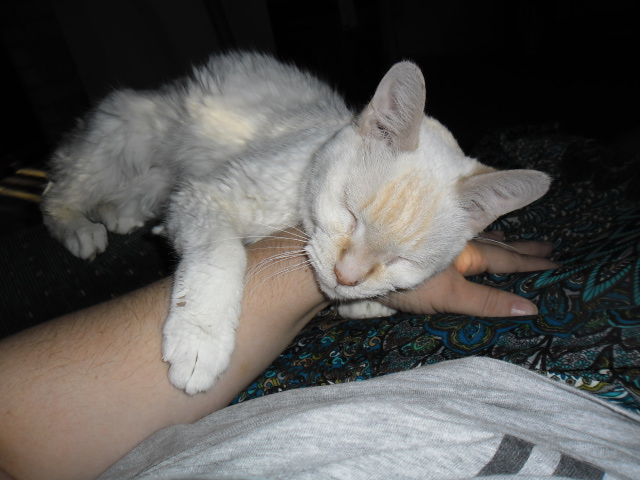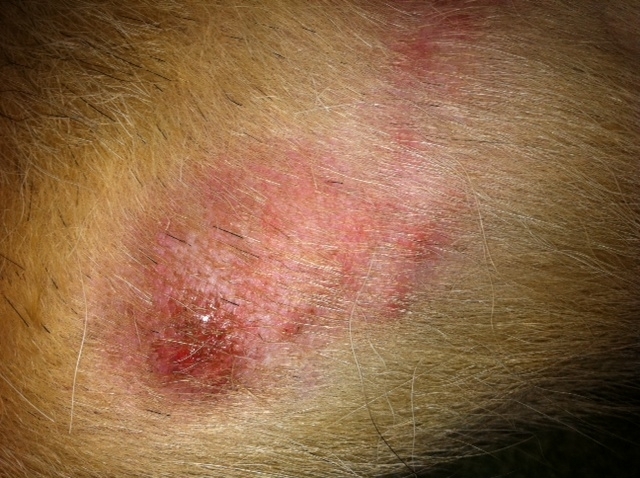QuestionQUESTION: My 6 year old lab sustained an injured foot/leg while running upstairs. Xrays were negative for fracture but showed a touch of arthritis in the foot.Doctor wasn't sure if this was the cause of her pain. Her pain is only walking up the stairs. She is perfect all other times, plus she comes down the stairs just fine.Rimadyl didn't work for her so she has been on Previcox. She is now able to make it upstairs. The vet tested her blood and it shows some changes in her liver presumably due to the previcox so they put her on S-Adenosyl-225 as well. Could you tell me if there is another treatment regimen we could consider? I will continue to buy the previcox and supplement if that is the only thing that will work for her.Is there another supplement we could use that would support the liver? Both medications are very expensive. I know the liver support is important but would like to find a more cost effective alternative to this treatment if it looks like this will be a long term issue.
ANSWER: I am concerned about several things. First of all, arthritis of the digits seems very unlikely in a 6 year old dog. Are you certain it was the foot and not higher up on the leg? Secondly, if she is having elevated liver enzymes then I would stop this medication immediately. An antioxidant, such as Denosyl, will not protect the liver against the hepatotoxic effects of the drug. I would find an alternative NSAID(the class of drug that Rimadyl and Previcox belong to) that is less likely to have these side effects such as Metacam. Unfortunately, all NSAIDS are pricey. I am concerned that the cause of the lameness may not be in the foot at all but may be higher up the leg. You did not mention whether it was a front leg or back leg so evaluating other joints may be beneficial. Any lameness that does not respond to rest and an NSAID should be evaluated further. If there is an orthopedic specialist in your area you may wish to get a second opinion as to the cause of the lameness.
Dr. G.
---------- FOLLOW-UP ----------
QUESTION: Thanks for your response. Our lab was fine until one day while walking upstairs she slipped a bit.After that she couldn't bear weight on her right rear leg for several minutes. Following this event, she could bear weight and walk without a limp but she could not walk upstairs. The vet did xrays of her spine to her foot on both sides to compare and really found nothing. They manipulated it and got nothing. Still she couldn't walk upstairs. While she is downstairs, she is fine. She runs and is very playful. It is just going upstairs. We sleep upstairs.So, when she was in pain, she would sit downstairs and cry. We carried her up for a couple days. She gets down without a problem. Now on the previcox she can go up on her own. What else can I get our docs to look for?
ANSWER: Knowing it is a rear leg lameness helps. A common injury to the rear leg is a torn cranial cruciate ligament or medial meniscus. These are structures in the knee that, when damaged, can be quite painful. These cannot be diagnosed on an xray as they are soft tissue structures. However, when the dog is sedated the knee can be palpated and manipulated to look for a "cranial drawer sign" (diagnostic for a torn cruciate) or a "meniscal click". Presence of either of these signs can indicate that knee surgery is required to treat the problem. When the dog is awake, if they are relaxed enough you can sometimes appreciate these signs as well. Typically, a 6 year old lab is too bouncy and tense to get a good exam. Also you can palpate a difference in the thickness of the knee compared to the normal one. The affected knee will feel thicker in its circumference, especially noticeable on the inside. Were her hips xrayed?
Hope this helps!
Dr. G.
---------- FOLLOW-UP ----------
QUESTION: Both of her hips were xrayed. They found some arthritis in the left hip but all the pain is on the right side. Would a meniscal tear or torn ligament explain why it hurts her only to go upstairs? When we are downstairs, outside or out for a walk, she has no problem. She looked painful last night walking upstairs again.
AnswerYour point is well taken about when the lameness occurs. Another possibility includes thoracic or lumbar disk herniation. This can happen traumatically and cause spinal cord compression. It can be more painful going upstairs because an incline can make the vertebrae compress and cause more pain. Going down the stairs may be less painful because the weight is shifted off the back and onto the forelimbs. Did your vet assess your dog for back pain?
Lameness evaluation is quite challenging based solely on history. A thorough orthopedic exam is critical to finding the source of the discomfort!
Dr. G.

 Cat Urinating
Question
Sealey
So my grandma just moved in two
Cat Urinating
Question
Sealey
So my grandma just moved in two
 Bloody Hair Ball
Question
My Little Girl
My indoor cat vomited up a very
Bloody Hair Ball
Question
My Little Girl
My indoor cat vomited up a very
 pancreatitis/lymphoma
Question
Romeo
Hello. I have a 9 year old Siames
pancreatitis/lymphoma
Question
Romeo
Hello. I have a 9 year old Siames
 German Shepard Skin Problem
Question
Max
Hi, My 6 year old male German Shepa
German Shepard Skin Problem
Question
Max
Hi, My 6 year old male German Shepa
 black spot on cats nose
Question
cat nose
Should I be concerned about the black
black spot on cats nose
Question
cat nose
Should I be concerned about the black